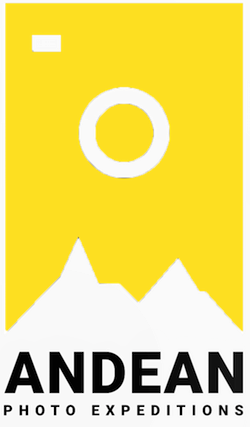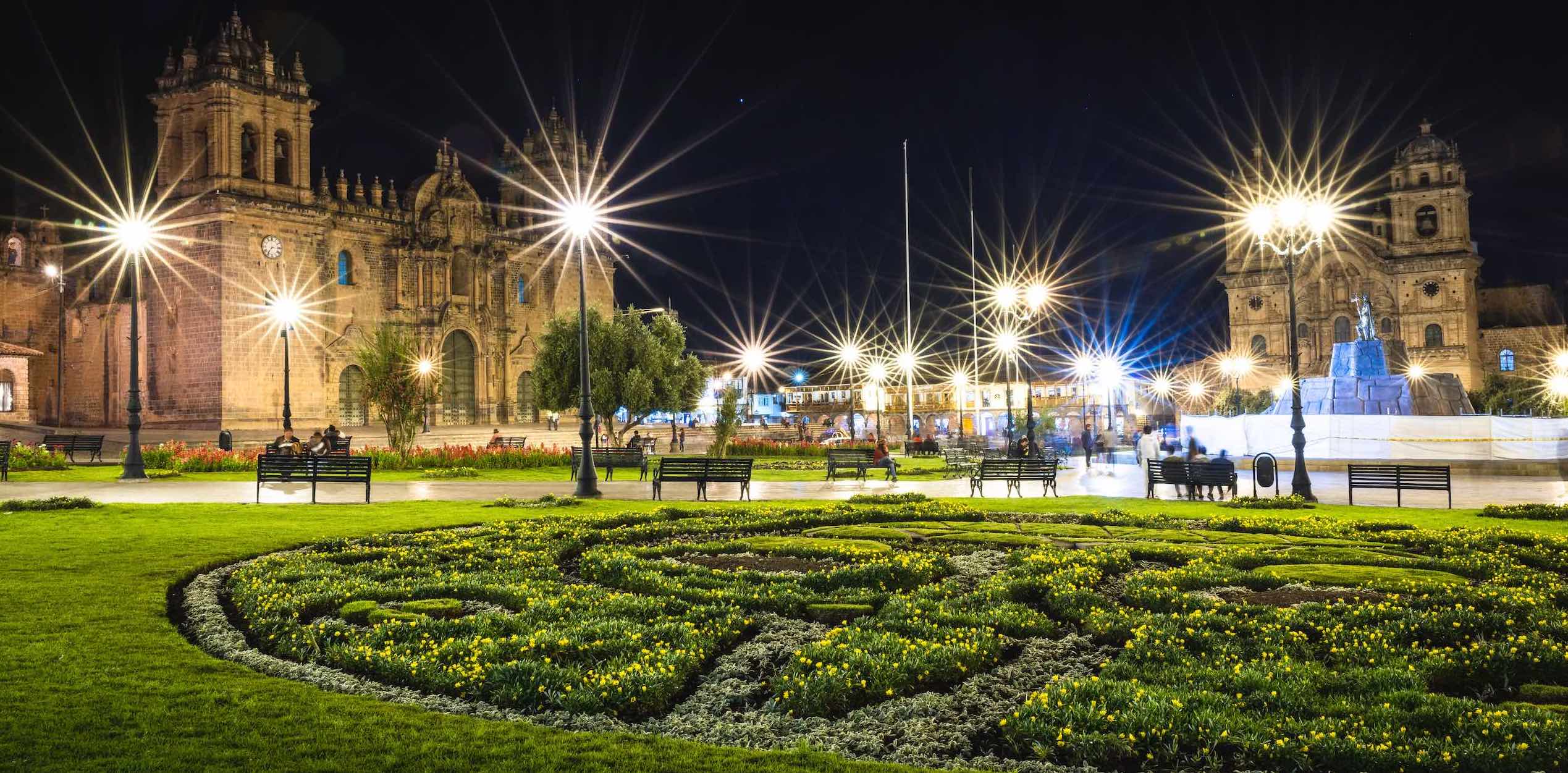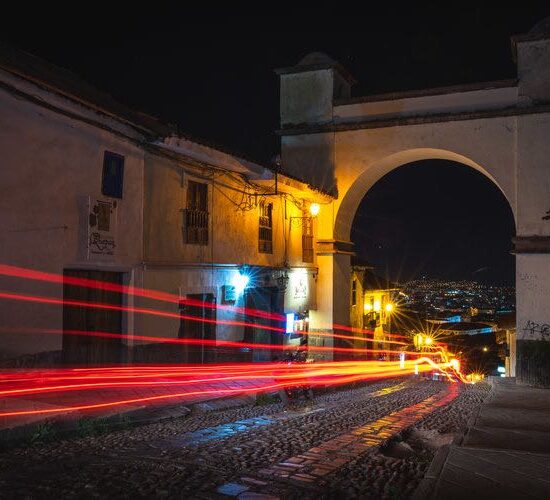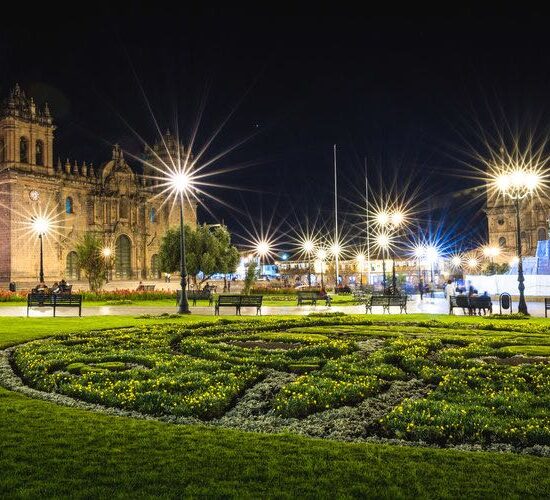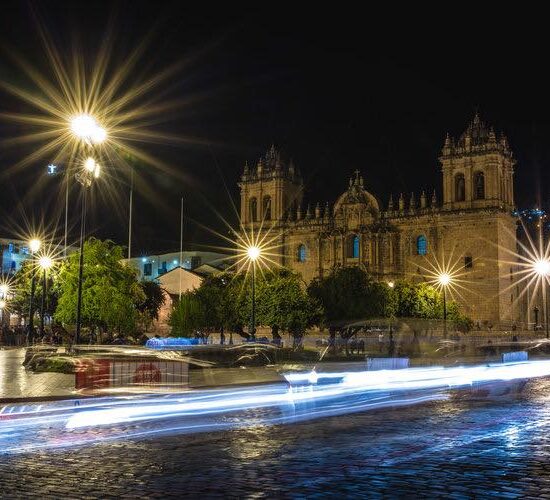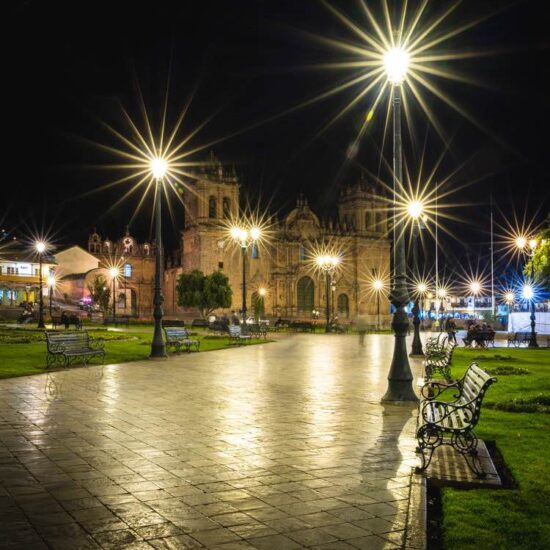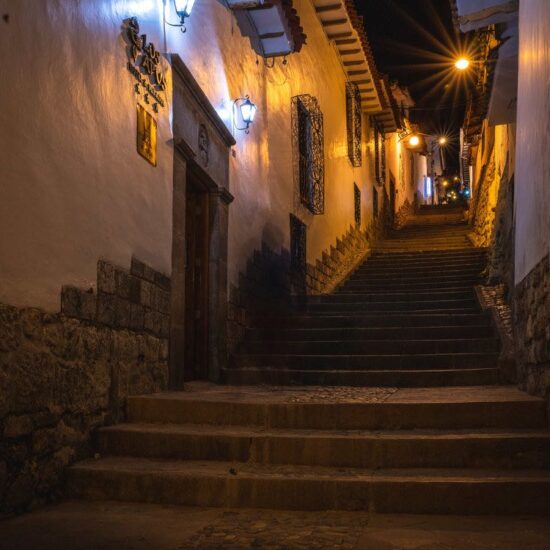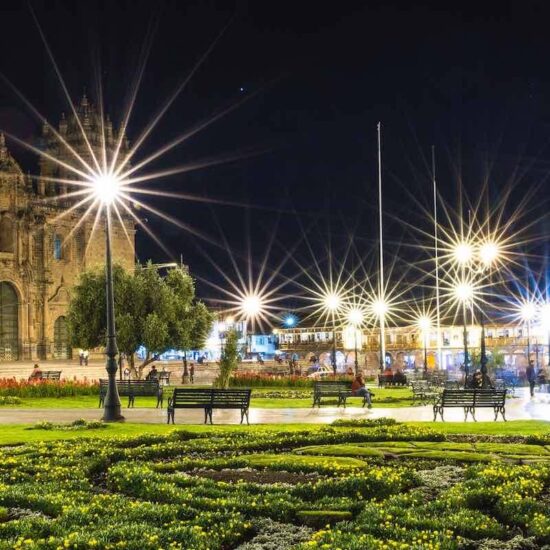Cusco Night Tour: Capture The Magic of Incas Capital After Dark
Dive into the nocturnal beauty of Cusco, the historic Inca capital that pulsates with a unique energy after sunset. Our Cusco Night Tour offers you a chance not just to explore this ancient city, but to see it through the eyes of a seasoned photographer.
We initiate our enchanting journey at 18h00. Our meeting point? The bustling McDonald’s at Plaza de Armas, a location that effortlessly marries the modern with the ancient. As we make our way to the Arch of Santa Ana, the city’s intricate architecture and the play of lights create a mesmerizing setting. This very ambiance aids in mastering the art of capturing evocative light trails.
Following this, Plazas San Francisco and Regocijo beckon. These squares, rich in history, are brought to life in the night. Their gently lit fountains, surrounded by age-old structures, provide the ideal setting for long exposure shots. Here, water doesn’t just flow; it transforms into a dreamy, silky spectacle.
As we journey onward to Plaza de Armas, Cusco unveils its heart. Majestic buildings tell tales of a glorious past, and every corner promises a perfect frame. The enigmatic San Blas neighborhood is our next stop. Its cobblestone streets and rustic charm make it a haven for photographers. Especially when aiming to capture ghostly silhouettes that whisper stories of ages gone by.
By 21h00, as our tour wraps up at Plaza San Blas, you’re not just a visitor; you’re a storyteller. Through your lens, you’ve chronicled tales, captured memories, and experienced Cusco’s night-time magic firsthand.
Tour Highlights:
- Experience Cusco’s vibrant nightlife and its historical aura.
- Benefit from tips and techniques shared by a professional photographer.
- Immerse in hands-on learning of long exposure techniques.
- Navigate your camera settings for perfect night captures, emphasizing Cusco’s splendor.
Notes
A tripod is essential for the best outcomes. Don’t have one? We’ve got you covered with a spare. To ensure your captures are flawless, we recommend Wide-angle lenses and Mid-range Zooms.
Tour Prices (all ages)
- For 1 person: 150 USD
- For 2 people: 90 USD each
- For 3 or more people: 70 USD each
So, why wait? Let the Cusco Night Tour immerse you in the mystique of the Inca capital. Join us, and let’s craft memories together.
-
Departure/Return Location
Plaza de Armas, Cusco -
Departure Time
Please arrive by 17:45-17:55 -
Return Time
Approximately 21:30 -
What to wear
Comfortable walking shoes and warm clothes (as the nights can get a little chilly). And don't forget your camera equipment! -
Included
GuidePhoto Assistance -
Not Included
AccommodationEntrance FeesExtrasInsuranceLocal FlightsLunchMealsTransport
Tour Plan
18h00 - Meeting
18h15 - Arch of Santa Ana
18h45 - Plazas San Francisco and Regocijo
19h30 - back to Plaza de Armas
20h15 - San Blas
21h00 - Finish
Tour Location
Welcome to the navel of the world
Tour Reviews
We will be grateful for your honest and objective feedback.
